Photo: Andy Provan with the Philadelphia Atoms. Courtesy of nasljerseys.com
With the arrival of the Gold Cup, the MLS season suffers a break of sorts—while league play continues, the absence of many top stars for national team duty results in a slightly diluted product.
In Philly, for instance, this means the Union will have to do without leading goal scorer Jack McInerney for about five games. Fortunately for the U, however, it appears Conor Casey is willing to pick up the slack in a return to his dangerous form of about five years ago. With Jack Mac currently sitting at 10 goals, and Casey with 6, Philadelphia can look forward to a pretty potent forward line combo once the Gold Cup ends.
In baseball, history is rife with reference to “lights out” starting pitching combinations—Randy Johnson and Curt Schilling for the 2001 Arizona Diamondbacks, for instance, or the legendary “[Warren] Spahn and [Johnny] Sain and pray for rain” of the 1940s Boston Braves. Philadelphia soccer has also seen its share of “lights out” scoring combos—and we’re going to revisit a few of them now.
What constitutes a dynamic duo for the purposes of this article? One of the duo must have scored at least 10 times and finished in the top 3 in goals, with the other either also finishing in the top 10 or having finished with at least 10 goals himself.
1921-22 Bethlehem Steel FC
Harold Brittan 24 goals
Tommy Fleming 15 goals
If you have visited these pages at all prior to today, you are acquainted with the story of how the most powerful soccer club in the United States—Bethlehem Steel—moved to Philadelphia to play as “Philadelphia F.C.” in the inaugural season of the original American Soccer League. The Phillies did not disappoint, running away with the league and claiming the first major league professional soccer crown in U.S. history.
Philadelphia was aided by the lethal scoring punch of Harold Brittan and Tommy Fleming. Former Chelsea forward Brittan (who we learned about last summer) led the league in goals with 24 in 17 games (missing about a month to a leg injury), establishing a league record that would last until Archie Stark’s legendary 67 goal performance with Bethlehem in 1924-25.
Meanwhile, “Whitey” Fleming finished in third in the goal scoring race, adding 15 to the Phillies’ league-leading total of 72. The Scotsman played with Beith F.C. and Greenock Morton before coming the to U.S. to sign with Bethlehem Steel in 1914.
As it is, this season was a last hurrah for both players in the Bethlehem fold, as each moved on to other clubs in 1922.
Incidentally, a third Philadelphia forward also finished in the Top 10 for goals that year—aging veteran Dougie Campbell, who netted 9 goals. A Scot by birth, Dougie moved to the U.S. at a young age and grew up in Philadelphia.
1943-44 Philadelphia Americans
Bob Gormley 16 goals
Duke Nanoski 14 goals
Goal scoring records are harder to come by for the second version of the American Soccer League (beginning in 1933). As a result, while there may have been years when Bert Patenaude and Bob Gormley combined for some productive seasons with the Philadelphia Germans, we simply can’t know for sure.
Based on the records we do have, however, we know that two local Philadelphians combined to dominate the ASL in 1944, leading the Philadelphia Americans to the league title that year.
Overlooked legend Gormley was featured in our last profile, and placed in second in the overall goal scoring table with 16 in 19 games.
John “Duke” Nanoski was born in Philadelphia in 1918, and graduated from Stetson High School. Beginning his pro career with St. Mary’s Celtic of Brooklyn in 1938, Nanoski led the ASL in goals with 20 in 1941-42. He transferred to Philadelphia the next season, and, by 1943, combined with Gormley to provide a potent combo. His 14 goals (in 15 games) in 1943-44 was fifth in the scoring table.
Because assist records are available for the 1943-44 season, we also know that Gormley and Nanoski notched 14 and 13, respectively. Thus, the duo figured in just over half of the team’s 59 goals.
1944-45 Philadelphia Americans
Duke Nanoski 22 goals
Ray Kelly 16 goals
So deep was Philadelphia soccer in the 1940s and 1950s that a player like Bob Gormley could have an off-season and another would simply take his place.
Such was the case in 1945. Nanoski had another tremendous year, leading the league in goals with 22 (in 19 games)—and also adding 16 assists. Irishman Ray Kelly added 16 goals (third in the table) and 9 assists in his 18 games played.
Unfortunately, the A’s had to settle for second place this season.
1946-47 Philadelphia Americans
Ray Kelly 14 goals
Bob Gormley 12 goals
Remember what we said about depth? With Nanoski slumping, Ray Kelly simply continued scoring (his 14 goals were third in the league), and Bob Gormley chips in another Hall of Fame caliber performance.
It should be noted that both men benefited from the able service of midfielder Serville Mervine. Although no official assists totals are available, Mervine’s distribution skills were such that the Eastern Soccer News named him ASL Most Valuable Player that season.
The A’s won another title that year (their sixth).
1947-48 Philadelphia Americans
Bob Gormley 13 goals
Fabri Salcedo 12 goals
Another year, another championship for the Philadelphia Americans—with more dominant scoring from its front line.
How deep was Philadelphia soccer during the era? So deep that the defending ASL champions—a team that had no less than three players who had finished in the top three goal scorers in other years—could go out and acquire three-time ASL leading scorer Fabri Salcedo from Brooklyn Hispano before the 1947-48 season.
Salcedo was born in Spain, and moved to the U.S. at 15. He signed professionally with Brooklyn in 1934 and spent the bulk of his career with that team. At 33 and near the end of his career, he was signed by the A’s.
Salcedo did not disappoint, netting 12 goals (tied for fourth in the league). Gormley’s 13 goals were third in the table.
Salcedo retired after the season. He was inducted into the U.S. Soccer Hall of Fame in 2005.
Speaking of Hall of Famers, it should be noted that the A’s placed a third goal scorer in the Top 10 that year—Duke Nanoski. In his last season with the A’s before moving to Brooklyn Wanderers, Nanoski scored 8 goals to finish at No. 88 in the table. Incidentally, Nanoski is also in the U.S. Soccer Hall of Fame, having been inducted in 1993 with another player you may have heard of…Pelé.
That’s right—the Philadelphia Americans had a forward line with three future Hall of Famers in 1948. Ah, the good old days…
1948-49 Philadelphia Nationals
Tommy Oliver 16 goals
Benny McLaughlin 10 goals
In 1949 it was the Philadelphia Nationals’ turn to win the ASL title, and they did—along with the Lewis Cup (the ASL league cup). The team just missed a treble, losing in the U.S. Open Cup finals that year.
With an all-native born team (Scot Eddie McIlveney being the only foreigner), the Nats did something that only St. Louis-based teams had done previously: won a title with an all-native (or, in this case, 99 percent all-native) side.
The Nats’ success in league play was due in no small part to the goal scoring exploits of native Philadelphians Tommy Oliver and Benny McLaughlin. Oliver’s 16 goals were second in the league, while McLaughlin’s 10 left him tied for third.
Given the dominance of the team—and the more offensive soccer of the era—it is not surprising to hear that the Nats placed a third scorer in the top ten—Joe White, whose 9 goals tied him for sixth on the list. Keep in mind the team also had future ASL goal leader Nick Kropfelder and you again have an idea of how deep and powerful Philadelphia soccer was during that era.
1960-61 Ukrainian Nationals
Herman Niss 17 goals
Ricardo Mangini 10 goals
Once again, ASL goal scoring records get kind of sketchy—while it is quite likely that Kropfelder, McLaughlin, Tommy Oliver, and others combined with the Nationals to provide more duos worthy of the list (or Jack Ferris, Len Oliver, and others with the Americans and Uhrik Truckers), the records simply don’t exist to find out.
Thus, it is not until 1960-61 that we find another lethal Philadelphia duo. By now, the Nationals had folded, and were essentially replaced by the Philadelphia Ukrainian Nationals. The Ukes would go on to be the dominant U.S. pro team of the 1960s, continuing Philadelphia’s undisputed reign as “Soccer City U.S.A.” (as, with all due respect, St. Louis’ reputation was based largely on college teams).
The Ukes won their first ASL title in 1961, led by league–leading goal scorer Herman Niss and his 17 markers. Proving that—despite the ethnic roots of the club—the Ukes wanted the best available players regardless of origin, Niss’ strike partner was Ricardo Mangini, whose 10 goals were good for 3rd overall in the league.
1962-63 Ukrainian Nationals
Ismael Ferreyra 14 goals
Mike Noha 13 goals
The Ukes won another ASL title in 1963, and did so on the back of dominant offense, this time resulting in that rarest of feats—the team’s strikers finished 1-2 in the goal scoring table.
Once again, the distinctly non-Ukrainian Ferreyra revealed what an open club Philadelphia was, and its faith was rewarded with a goal-a-game season.
Mykhaylo “Mike” Noha, on the other hand, was Ukrainian through-and-through—and remains a legend. He was ASL MVP in 1960-61 (yes, the same year Niss and Mangini finished first and third in goals), and is famous for his 5 goal performance in the U.S. Open Cup final that year. Noha was eventually capped for the U.S., appearing in a 10-0 drubbing at the hands of England in 1964.
This is also one of those years where the dynamic duo was also a trio—former Temple Owls star Walter Chyzowych added 11 goals, good for fourth on the scorers’ table. Born in Poland, Chyzowych moved to the U.S. at an early age, and starred at Temple before embarking on a long pro career in the ASL, mostly with Philadelphia and, later, with Newark Ukrainian Sitch. He also featured in the Philadelphia Spartans side of the 1967 National Professional Soccer League.
Chyzowych would go on to coach the U.S. National Team from 1976 to 1980. He was inducted into the U.S. Soccer Hall of Fame in 1997.
1967-68 Ukrainian Nationals
Ivan Paleto 14 goals
Luis Passache 9 goals
The Ukrainian Nationals’ glorious run of titles ended in 1968, led by ASL leading goal scorer Ivan Paleto. Finishing third in the scorer’s table as Luis Passache.
Again, the names tell the tale of how little ethnicity had to do with the Ukes’ success. But, in many ways, that is one of the burdens carried by soccer teams of the pre-NASL 1960s. Saddled with ethnic nicknames, these clubs read as little more than social groups when, in fact, they often featured the top soccer talent available in the county at the time. Perhaps if the Ukes were simply “Philadelphia Nationals,” they would be better remembered today, and given a little more respect by “casual” sports historians.
1973 Philadelphia Atoms
Andy Provan 11 goals
Jim Fryatt 7 goals
Although the 1973 North American Soccer League champion Philadelphia Atoms is remembered today for its stifling “No Goal Patrol” defense, the team could also score.
Andy “The Flea” Provan and Jim Fryatt both came on loan from Southport, a 3rd Division English side (today, the club would be considered League One in England). Provan—as his nickname would indicate—was short, stout, and quick. Fryatt, on the other hand, was tall and rangy, often scoring goals in the air.
Provan’s 11 goals tied him for third overall. Fryatt’s 7 goals would not have landed him in the Top 10—however, I deviated from my criteria because Provan and Fryatt were so good together that they finished second and third, respectively, in the MVP voting that year.
But a picture is worth a thousand words. Check this out for more:
1979 Philadelphia Fury
David Robb 16 goals
Frank Worthington 10 goals
I am again deviating from my criteria to present this Philadelphia Fury duo, because they give an interesting glimpse into the state of U.S. soccer during the golden years of the original North American Soccer League.
Can you imagine a situation where the Union have a top goal scorer (say, Jack McInerney), and then were able to add Robin Van Persie (the English Premier League’s leading scorer) on loan at the end of the English season? Boggles the mind, right?
Yet, that is exactly what happened in 1979. Prior to the start of its second season, the Fury acquired established NASL scorer Robb from Tampa Bay, and he did not disappoint, scoring a hat trick in his first game with the club. His goal-scoring prowess would continue throughout the summer, eventually totaling 16 in 20 matches.
Meanwhile, Frank Worthington was starring for Bolton Wanderers in the English First Division (today’s EPL), leading the circuit in goals in 1978-79. As was the custom at the time, top English players would then be made available “on loan” to NASL teams—while this was usually used to “season” young players (like Manchester United’s loaning of Gordon Hill to Chicago in 1975), it was also a means of clubs to reduce the wage obligations of top players. Thus, players like Trevor Francis—England’s first million pound transfer—would be found plying their trade in the summer months in the NASL (in Francis’ case, with Detroit Express).
Worthington was no exception, and was slated to join an NASL club in the summer of 1979. There was one small problem, though—Worthington managed to agree to loan deals with two clubs, Philadelphia and Dallas Tornado. Ultimately, the NASL determined the Fury held Worthington’s rights, and he managed to play 21 games with the team, scoring 10 goals.
There you have it. Will Jack Mac and Casey make the list? It will be an exciting summer finding out!
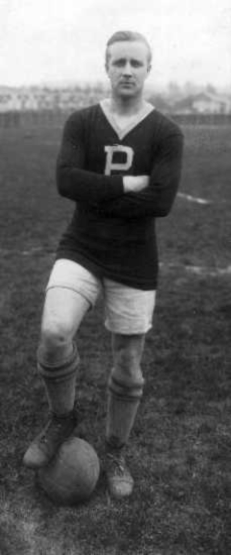
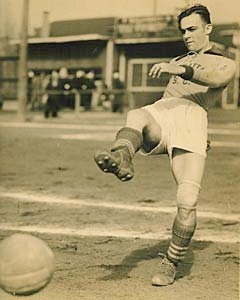
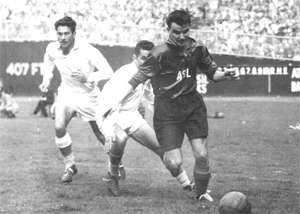
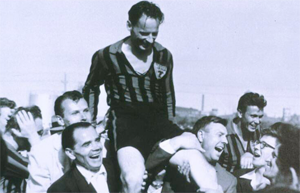
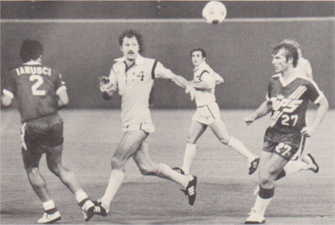


Think you mean “diluted” product, but “deluded” might work, too.
The Spahn and Sain line was actually for the 1948 Boston Braves. Johnny Sain had left the team before the moved to Milwaukee in the early ’50s (where they were the Milwaukee Braves, not the Brewers).
Andy–is Sain that old? Ouch. Good catch. But, then, if I was a baseball guy I’d be working on Baseball-Reference.com, wouldn’t I? 😉
Oh geez…I just caught the “Brewers” error. Yes, I *did* know better than that! Thx again!
Caught the video on Provan and Fryatt; what a flashback to hear John Facenda on the audio. Nicely done.
Thanks for putting Philly soccer history out there, very enlightening.